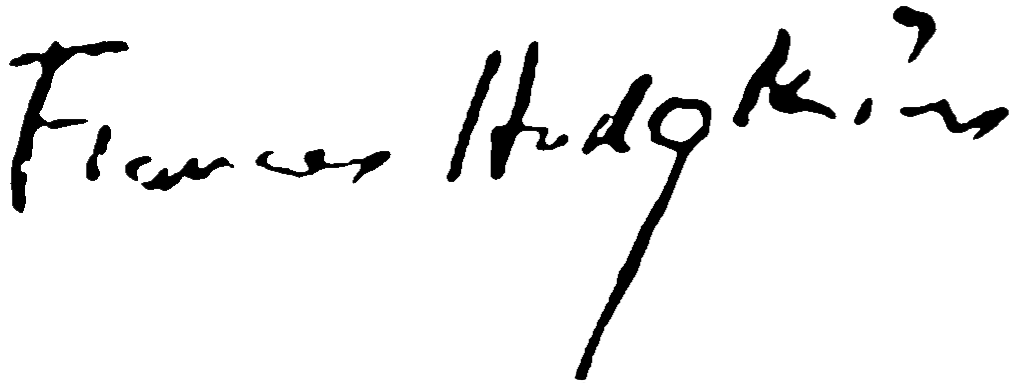-
Frances Hodgkins
The Water Wheel c.1926
Watercolour & pencil, 20 x 30.5 cm
Signed Frances Hodgkins lower right
To Hannah Ritchie, 14th March 1925; from F.H., 61 Earls Court Square SW5
What are you doing at Easter, I could come away with you if you are not on a walking - climbing holiday - or don’t want to be alone and together. As I am not off to Australia before the autumn we have the summer before us. Do let us have a painting jaunt together …
During the early 1920s Frances Hodgkins was nothing if not peripatetic. In 1920 she spent some six months at St Ives and in December she went to France. She was back in England by the following November, and in early 1922 established a studio in Burford, in the Cotswold hills in West Oxfordshire, where she was based for most of the year and gave summer classes. She spent Easter 1923 at Rainow, Cheshire, and in October she returned to France, where she remained until February 1925.
As recounted by Myfanwy Evans in her 1948 publication for the Penguin Modern Painters series - by 1925 Hodgkins had almost made up her mind to return to New Zealand ‘for good’. Discouraged by the onset of another northern winter and disheartened by what Eric McCormick described as ‘the bleak future that seemed to lie ahead’, she had in fact booked a passage to Melbourne, Australia, and was due to sail on 30 June 1925. However, good fortune intervened when a month earlier in Manchester, which had recently become a lively centre for the arts, two of Hodgkins’s pupils and friends, Hannah Ritchie and Jane Saunders, arranged for her to meet the director of the board of the Calico Printers’ Association (CPA). This led to her having an interview and the offer of a job as a textile designer in Manchester, which she accepted. It proved challenging work and kept her away from her painting, and she found the local climate ‘awful’, but it did provide a much needed income. As she wrote to her mother: ‘I can hardly believe it that the terror of these past distracted years has passed & that life has eased for me just when I had given up all hope’.
By the beginning of 1926 Hodgkins was living in Manchester with Hannah Ritchie and Jane Saunders, who assisted her financially and remained in contact until the end of her life. They had also been the subject of her c.1922 oil on canvas, Double Portrait (Hocken Library, Dunedin). The job with the CPA was Hodgkins’s sole venture into the world of commercial art, but it was not a success. After a six months probationary period her contract was not renewed, but it appears she continued working for the company on a freelance basis. In the summer of 1926 she took sketching classes at Ludlow and Bridgnorth in Shropshire, and in November she had a successful one-person exhibition of eighty works at a gallery in Mount Street, Manchester. It seems likely that while based in Manchester she and her friends Hannah and Jane visited Rosthwaite, in Borrowdale in the English Lake District, on one of their many outings. It was this small town which provided the subject-matter for The Water Wheel.
The Water Wheel is executed largely in outline, with small amounts of shading and minimal in-filling of colour. The waterwheel itself occupies the centre of the composition and is seen slightly obliquely and flanked by the trunks of rather spindly trees, which are largely spared of branches and foliage. Several large hills, slightly shaded for definition, can be seen in the background, and a small stream in the foreground provides reflections of the overhanging trees.
In technique and probably also location, The Water Wheel relates to another watercolour, Bridge Near Rosthwaite, Borowdale 1926 (Auckland Art Gallery). In this painting a small stone bridge crossing a stream in the lower centre of the composition is surrounded by trees, again depicted as simple trunks and with some bearing large and simplified clumps of foliage. There are also steep hills outlined in the distance, and overall a restrained use of colour, mostly shades of ochre relieved by occasional patches of green.
Hodgkins remained in Manchester until around June 1927. By then her reputation appeared to be on the rise and so she decided to leave that city, it having now served its purpose, and where it just rained ‘soot & depression’. She sent a consignment of pictures back to New Zealand – five of which were shown with the Academy of Fine Arts in Wellington in September 1927 - and then quickly left for the warmer climate of Tréboul in Brittany.
Written by Jonathan Godoerham & Richard Wolfe.
Provenance
Private collection Auckland John Leech Gallery, June 1998 Private collection, Auckland
Exhibited
Manchester, U.K. 2 Mount St Gallery, November 1926, #79, £5-0-0
Auckland, N.Z. John Leech Gallery, Frances Hodgkins 1869 – 1947, June 1998, No. 23
Auckland, N.Z. Jonathan Grant Gallery, Frances Hodgkins: A New Zealand Modernist June 2019
Literature
John Leech Gallery, Frances Hodgkins 1869 – 1947, June 1998, No. 23
Roger Collins and Iain Buchanan, Frances Hodgkins on Display 1890 – 1950 (Hocken Library 2000), p. 60
Reference
Frances Hodgkins Database FH0780
(completefranceshodgkins.com)
Illustrated
John Leech Gallery, Frances Hodgkins 1869 – 1947, June 1998, No. 23
